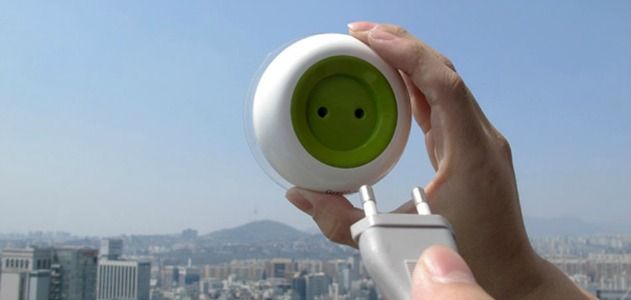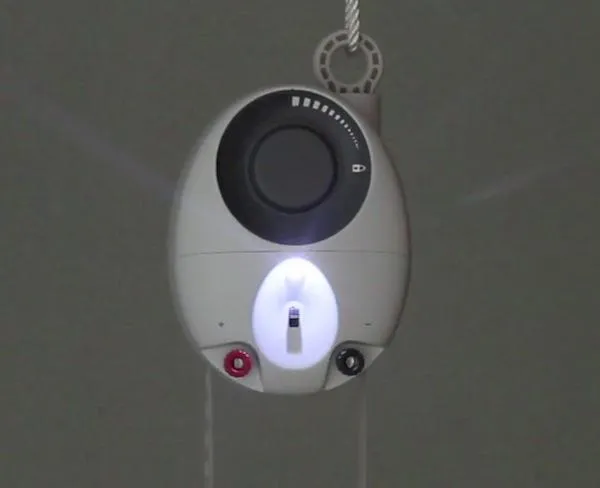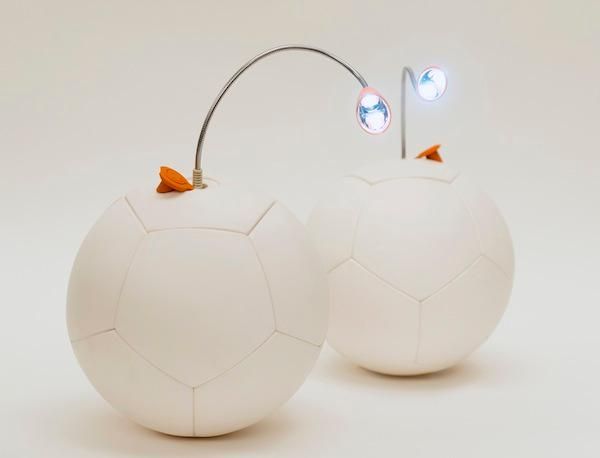Five Innovative Technologies that Bring Energy to the Developing World
From soccer balls to cookstoves, engineers are working on a range of devices that provide cheap, clean energy
/https://tf-cmsv2-smithsonianmag-media.s3.amazonaws.com/filer/8c/7f/8c7fb39b-999a-4316-a24f-7d48bade25b4/voto-stove.jpg)
In the wealthy world, improving the energy system generally means increasing the central supply of reliable, inexpensive and environmentally-friendly power and distributing it through the power grid. Across most of the planet, though, simply providing new energy sources to the millions who are without electricity and depend on burning wood or kerosene for heat and light would open up new opportunities.
With that in mind, engineers and designers have recently created a range of innovative devices that can increase the supply of safe, cheap energy on a user-by-user basis, bypassing the years it takes to extend the power grid to remote places and the resources needed to increase a country’s energy production capacity. Here are a few of the most promising technologies.
1. VOTO: Millions of people around the world use charcoal and wood-fueled stoves on a daily basis. VOTO (above), developed by the company Point Source Power, converts the energy these fires release as heat into electricity, which can power a handheld light, charge a phone or even charge a spare battery. The company initially designed VOTO for backpackers and campers in wealthy countries so they can charge their devices during trips, but is also trying to find a way to make it accessible to residents of the developing world for daily use.

2.Window Socket: This is perhaps the simplest solar charger in existence: Just stick it on a sunny window for 5 to 8 hours with the built-in suction cup, and the solar panels on the back will store about 10 hours worth of electricity that can be used with any device. If there’s no window available, a user can just leave it on any sunny surface, including the ground. Once it’s fully charged, it can be removed and taken anywhere—inside a building, stored around in a bag or carried around in a vehicle. The designers, Kyuho Song and Boa Oh of Yanko Design, created it to resemble a normal wall outlet as closely as possible, so it can be used intuitively without any special instructions.

3. The Berkeley-Darfur Stove: In the past few years, a number of health researchers have come to the same conclusion: that providing a safe, energy-efficient wood-burning cookstove to millions of people in the developing world can directly improve health (by reducing smoke inhalation), aid the environment (by reducing the amount of wood needed for fuel) and alleviate poverty (by reducing the amount of time needed to devote to gather wood every day).
Many projects have pursued this goal, but Potential Energy, a nonprofit dedicated to adapting and scaling technologies to help improve lives in the developing world, is the furthest along, having distributed more than 25,000 of their Berkeley-Darfur Stoves in Darfur and Ethiopia. Their stove’s design achieves these aims with features such as a tapered wind collar, a small fire box opening, nonaligned air vents that reduce the amount of wind allowed to stoke or snuff the fire (which wastes fuel) and ridges that ensure the optimal distance between the fire and pot in terms of fuel efficiency.

4. GravityLight: Along with wood-burning stoves, the kerosene-burning lamps that provide light throughout the developing world have recently become a target for replacement for one of the same reasons: The fumes generated by burning kerosene in closed corners are a major health problem. A seemingly simple solution is GravityLight, developed by the research initiative deciwatt.org.
To power the device, a user fills an included bag with about 20 pounds of rock or dirt, attaches it to the cord hanging down from the device and lifts it upward. The potential energy stored in that lifting motion is then gradually converted to electricity by the GravityLight, which slowly lets the bag downward over the course of about 30 minutes and powers a light or other electrical device during that time. It’s currently priced at about $10, and because it requires no running costs, the development team estimates that the investment will be paid back in about 3 months, as compared to the cost of kerosene.

5. SOCCKET: Soccer—known simply as football in nearly every English-speaking country besides the U.S.—is easily the most popular sport in the world. The newest product of Uncharted Play, a for-profit social enterprise, seeks to take advantage of the millions of people already playing the sport to replace kerosene lamps with electric light generated in a much different manner. Their ball uses an internal kinetically-powered pendulum to generate and store electricity. After about 30 minutes of play, the ball stores enough energy to power an attachable LED lamp for 3 hours. Development of the product was funded via Kickstarter, and the first ones will ship in the next few weeks. A percentage of all retail sales will go to providing SOCCKETs to schools in the developing world.
/https://tf-cmsv2-smithsonianmag-media.s3.amazonaws.com/accounts/headshot/joseph-stromberg-240.jpg)
/https://tf-cmsv2-smithsonianmag-media.s3.amazonaws.com/accounts/headshot/joseph-stromberg-240.jpg)